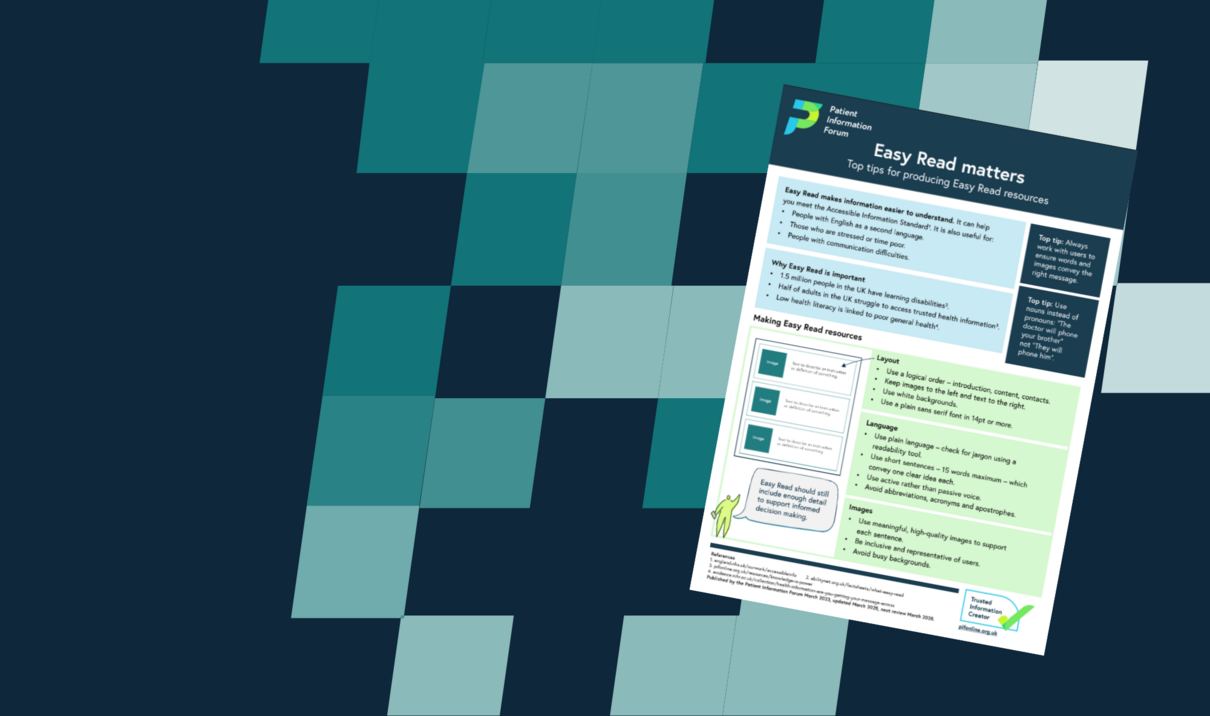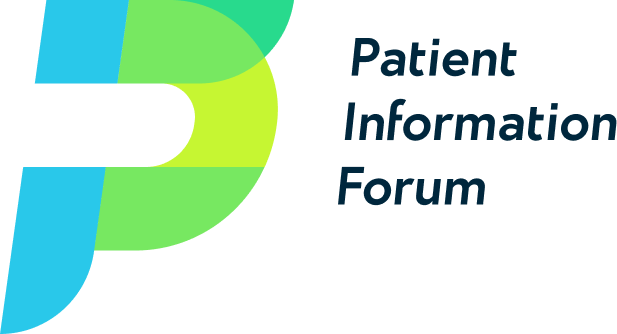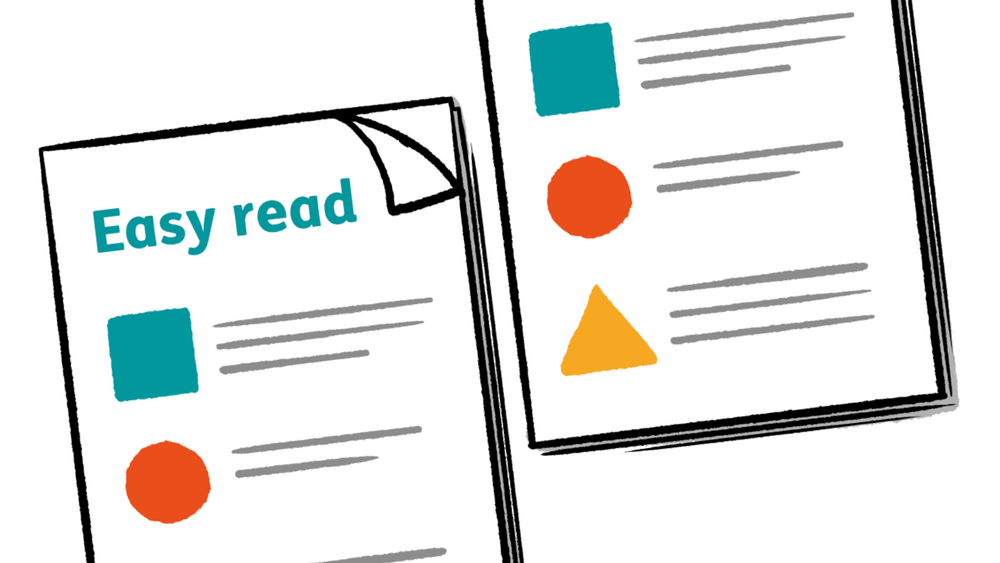
Easy Read matters
Easy Read makes information easier to understand. Our one-page poster covers why it is important and offers tips on creating Easy Read resources.
Easy Read makes information easier to understand. It can help you meet the Accessible Information Standard. It is also useful for:
- People with English as a second language.
- Those who are stressed or time poor.
- People with communication difficulties.
Why Easy Read is important
- 1.5 million people in the UK have learning disabilities.
- Half of adults in the UK struggle to access trusted health information.
- Low health literacy is linked to poor general health.
Making Easy Read resources
Layout
- Use a logical order – introduction, content, contacts.
- Keep images to the left and text to the right.
- Use white backgrounds.
- Use a plain sans serif font in 14pt or more.
Language
- Use plain language – check for jargon using a readability tool.
- Use short sentences – 15 words maximum – which convey one clear idea each.
- Use active rather than passive voice.
- Avoid abbreviations, acronyms and apostrophes.
Images
- Use meaningful, high-quality images to support each sentence.
- Be inclusive and representative of users.
- Avoid busy backgrounds.
Top tips
- Always work with users to ensure words and images convey the right message.
- Use nouns instead of pronouns: “The doctor will phone your brother” not “They will phone him”.
- Easy Read should still include enough detail to support informed decision making.
Published by the Patient Information Forum March 2023. Updated March 2025, next review March 2028.

Easy Read Matters
Easy Read Matters 2025 update

